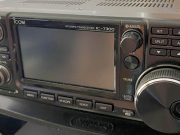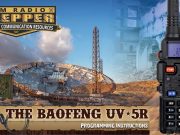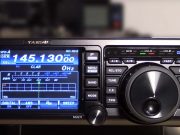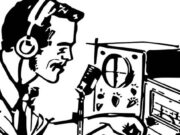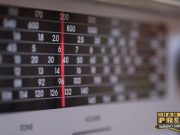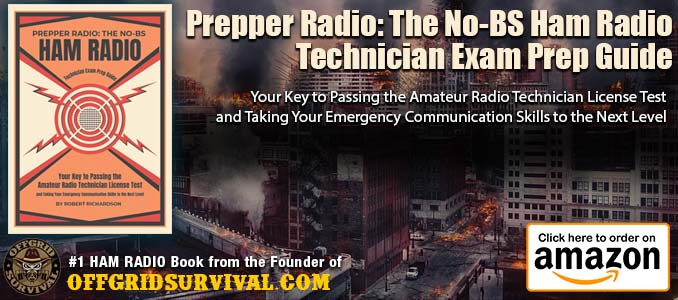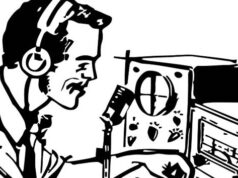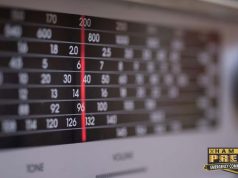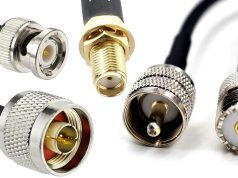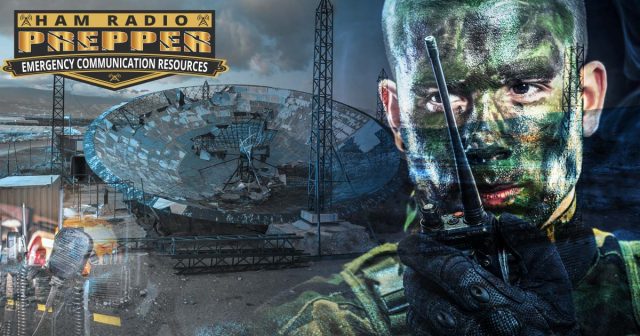
One of the purposes of this website is to teach people how to use amateur radio equipment to communicate during times of crisis, but there is one important aspect of ham radio and emergency communications that is often overlooked, even on preparedness-related websites: the importance of monitoring radio stations and signals to gather vital information on what’s going on during times of crisis.
Ham radio is a natural fit for preppers because it allows them to communicate with the outside world when other forms of communication fail. But ham radio is not just for emergencies. In a world where government agencies and big media corporations control much of our communication infrastructure, ham radio provides an alternative means of communication that is independent and hard to censor.
Think about it. During a crisis, the government and media basically control any information that is being shared with the public. They can censor or manipulate the news to fit their agenda. But with ham radio, you can hear from people on the ground and get firsthand information about what is really going on. You can also communicate with others who share your beliefs and worldview and may have insights or information that the mainstream media won’t cover. It’s one thing to hear CNN and FOX babble on about what they say is going on in Russia; it’s entirely different to talk to someone who is actually there!
And let’s not forget the importance of being able to communicate with others in a worst-case scenario. In a time of martial law or civil unrest, ham radio could be a lifeline for those cut off from the outside world.
Ham radio is not just a hobby or backup plan. It’s a vital tool for staying informed, connected, and free.
If you are looking into Ham Radio so you can communicate during disasters where our communications infrastructure goes down, part of your emergency plan should include radio monitoring. Ham Radio allows you to not only communicate but to gather vital intelligence when the grid goes down or when governments start to shut down and censor other forms of communication.
What is Emergency Radio Monitoring or Intelligence monitoring?
A good plan should include a little bit of everything, including local AM and FM radio stations, international shortwave stations, local police and first responder frequencies, military communications, ham radio communications, and any other kind of radio transmission you can think of.
Radio Monitoring Topics: Table of Contents
AM/FM Stations To Monitor During an Emergency

Unfortunately, these will probably be one of the first things to go down locally during a large-scale crisis. That being said, these bands are worth monitoring and may be used by local emergency organizations to communicate information to the public – just keep in mind the information will likely be information provided by authorities and could be heavily biased by whoever is trying to get their message out.
Traditional FM radio broadcasts will be extremely local in nature, with the longest ranges you can expect being somewhere around a hundred miles or so. Traditional commercial FM Radio stations operate on between 87.5 to 108.0 MHz — between VHF television Channels 6 and 7. There has been some talk in the United States about extending these to include 76–88 MHz, but so far that has not happened.
Amplitude Modulated (AM radio) is a different story. Depending on propagation, the time of day, and how much power is being output by the transmitting station, AM radio could allow you to receive stations from hundreds of miles away. During normal daily operations, the FCC makes AM radio stations go into low power mode at night because AM signals can travel hundreds of miles by reflection from the ionosphere, a phenomenon known as skywave propagation.
AM radio carrier frequencies are in the frequency range from 535-1605 kHz.
What Type of Radio Do You Need for AM & FM Broadcasts
Most standard radios are going to pick up local AM/FM bands, but to cover all your bases you are going to want an emergency radio that covers more than just local frequencies. A good all-band HF Ham Radio is going to cover the AM bands along with many of the frequencies we will be looking at in this article. A good VHF/UHF Radio should also pick up the FM Bands.
Recommend Radios
- American Red Cross Emergency Radio: If you are looking for a basic AM/FM Emergency Radio this is a great little radio with backup solar power and a handcrank.
Shortwave Broadcasts To Listen to During Times of Crisis
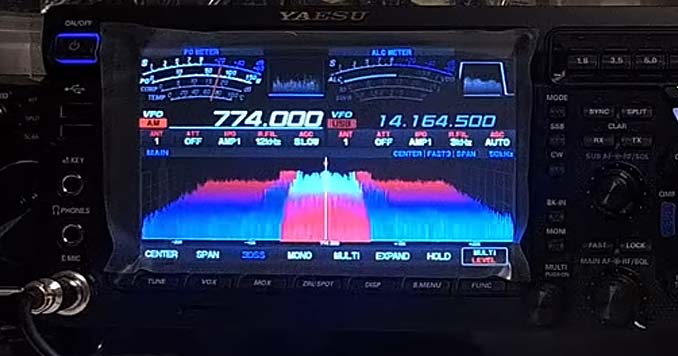
During a global crisis, or one where your country has either restricted information or has lost its communication infrastructure, the ability to pick up shortwave radio broadcasts is absolutely essential. While many of these are commercial broadcasts that may be biased in favor of the country they are being broadcast from or the political bias of station owners, they provide a valuable look outside of your country and can help you gather valuable intelligence and news you may not be hearing inside your country.
Depending on the time of day, or even the year, shortwave radio stations can bounce around a little depending on propagation. But in general, many of the frequencies and bands used for short-wave radio broadcasts can be easily found since they have been standardized internationally by the International Telecommunications Union. Not everyone sticks to this, so you will also find out-of-band broadcasting just outside of the agreed-upon frequencies.
If you are looking for international shortwave broadcasts, the agreed-upon frequencies are a good place to start.
Shortwave Frequencies to Monitor
- For a full list of Shortwave Frequencies to monitor, Check out our Shortwave Frequency Monitoring List.
Recommended Shortwave Radios
- You will be able to hear Shortwave Broadcasts on any of the HF Radios here.
- C Crane CC Skywave: If you are just looking for a basic radio for monitoring only, then the C Crane CC Skywave is a good starter radio.
Amateur Radio: Intel from Ham Radio Broadcasts
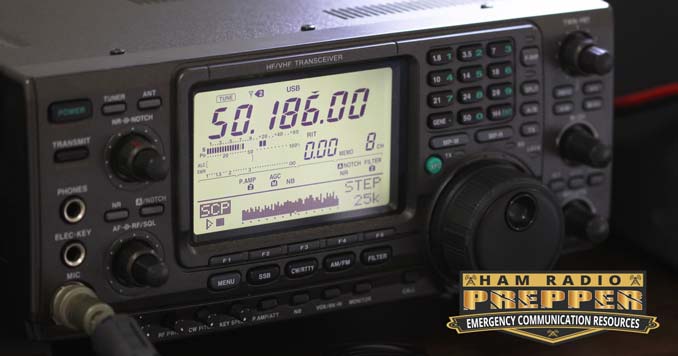
In my opinion, the ham bands are probably the most important frequencies you can listen to during an emergency, especially if you are looking for information that is least likely to be censored by a government or corporation. These bands are made up of amateur radio operators from around the world, many of whom are emergency communications experts who will likely still be operating even during a worse-case disaster scenario.
While individual broadcasts may be personally biased, you are going to find the largest range of opinions and unfiltered information on the hams bands. And if you are a licensed ham, this will also give you the opportunity to speak with these operators, ask questions, and obtain real-time disaster/crisis information.
When it comes to Ham Radio, we split the bands into six distinct bands LF, MF, HF, UHF, VHF, and Microwave Bands. Generally, for the purposes of emergency communications and intel/news monitoring, we are going to put the most focus on the HF and UHF/VHF bands.
The HF (high frequency) Bands
The HF (high frequency) Bands range from 3.5MHz to 29.7MHz and are generally thought of as long-range communication bands, although you will find a little bit of everything here and a lot of this depends on the time of day, season, propagation and a whole range of different things that can affect transmissions and reception.
The VHF/UHF bands
The VHF/UHF bands (very high frequency and ultra-high frequency) are going to be where you find local communications. The band’s frequency range goes from 50MHz to 2450MHz.
While it is possible to hear and communicate with long-range stations during certain band openings or with knowledge that goes far beyond the typical beginner ham operator, these bands are going to primarily be your source for local communications. That being said, this is also a place where you will use repeater systems that can connect your city, county, state and even interstate depending on the repeater network. During an emergency, many of these repeaters are equipped with emergency backup power, how long that will last is anyone’s guess, but they are an important part of ham radio.
What Ham Bands and Stations Should you Monitor during an Emergency?
- For a full list of Ham Radio Frequencies to monitor, Check out our Ham Radio Frequency Monitoring List.
Recommended HF Radios
- ICOM IC-7300: This is our main HF base rig! The radio receives from 0.030 to 74.800 MHZ. It operates on SSB, CW, RTTY, AM and FM modes.
- FT891 Yaesu – If you are looking for a small HF Rig that can be used either as both a base station and a mobile rig then we recommend the FT891. Check out our full review here.
- Our full List of HF Radios Reviews
Recommended VHF/UHF Radios
- The Yaesu FT-60: When it comes to handheld VHF/UHF Radios, it doesn’t get any better than the FT-60! See our full review here.
- See our Full list of VHF/UHF Radio Reviews
HF Utility: Maritime, Aviation and Utility Frequencies.

This is a weird category because it’s kind of like a hodgepodge of crap that doesn’t belong in any other category – but that doesn’t mean it should be overlooked during times of crisis. This category includes anything that is not a commercial radio station or news broadcast and doesn’t fit into any of the other categories we outline in this article. It includes things like maritime, aviation and utility type stations.
These frequencies usually can be picked up on an all-band HF ham radio, but are difficult to pin down or give exact frequencies. In fact, most of these stations are unscheduled broadcasts and could broadcast for seconds to hours – but once you find them take note of where they are at! A radio with a wide band waterfall display can help you find these stations and alert you when they pop up.
For emergency/survival purposes we like these types of broadcasts because they often give regular send out advisories and updates concerning areas to avoid and why you should avoid them.
Police, Fire, EMS and First Responder Frequencies

This is where things start getting a little tricky; over the last decade, a lot of emergency responders have started using encrypted communications to block the general public from hearing their broadcasts. That being said, while some of the tactical channels may not be accessible there are still a huge number of broadcasts that can be picked up by the general public.
Most public services (Police, Fire, EMS, etc) have moved to a P25 digital modulation format and are on a trunking system somewhere between 700 or 800 MHz. Some of these transmissions will never be able to be heard “legally”, but there are legal scanners that can pick up a lot of these transmissions.
Beyond specialized public services that are specifically made to monitor trunked radio systems, a cheap Baofeng or many dual-band VHF/UHF Radios can still pick up some public service communications, just keep in mind they are not the best radios for this specific type of monitoring.
Recommended Police, Fire, and EMS Scanners
- Uniden Bearcat BC125AT Handheld Scanner: Monitor over 40,000 frequencies where you will find civilian and military bands, including Police, EMS, Fire, Marine, Aircraft, Railroad, Civil Air, and ham services.
- Uniden BCD996P2 Digital Mobile TrunkTracker V: This scanner will allow you to monitor communications on APCO 25 Phase 1, Phase 2, X2-TDMA, Motorola, EDACS and LTR trunked systems.
Citizens band radio: CB Radio for Emergencies
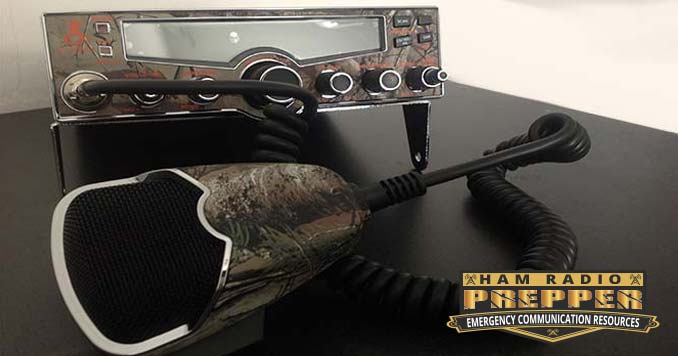
While it’s not as popular as it was in the 80s, CB Radio is still used by a lot of truckers, off-roaders, and even a small community of people who just love CB Radio. For the most part, these transmissions are going to be local in nature, but during the right conditions – or if it’s a trucker with an illegal amplifier – you can hear cross-country communications.
Citizens band radio (CB) operates on the 11-meter band on 40 channels between 26.965 MHz and 27.405 MHz. Since the band is right below the 10-meter ham radio band, most HF Ham radios will be able to receive these signals. If you are planning on transmitting, you will need a radio that has been modified to transmit or a dedicated CB Radio.
Recommended CB Radios
FRS, GMRS, MURS Frequncies

Depending on the emergency situation, there may be a lot of people who don’t normally use radio communications looking for a way to communicate. Most normal people are not going to have a ham radio on hand, but some of them may have FRS, GMRS or MURS Radios. But to be honest, these are not on the top of my list of channels to monitor, because I think they are going to be very limited during times of crisis.
That being said there are a couple of things that I like about these bands. From a survival perspective, the people who use these bands are not very experienced in radio communications and they are not likely thinking about things like OPSEC so you may hear a lot of local information that may come in to use.
FRS (Family Radio Service) radio.
FRS was established in the United States in 1996 with the help of Radio Shack as a private, two-way, short-distance voice and data communications service for families and groups. FRS is authorized on 22 channels in the 462 MHz and 467 MHz range. If you’ve seen the small walkie-talkie type radio’s at your local outdoor sporting store, there is a good chance they use FRS.
GMRS (General Mobile Radio Service) radio
The General Mobile Radio Service (GMRS) is an FCC-licensed radio service that uses channels around 462 MHz and 467 MHz. While you need a license to operate these radio, all you have to do is fill out an application, and unlike Ham Radio you don’t need and specialized knowledge to obtain your license.
The Radios are very similar to FRS Radios, but can operate at higher power levels and can even hit repeater systems giving them a better range. There are 30 frequency channels around 462 MHz and 467 MHz.
MURS (Multi-Use Radio Service) radio.
MURS uses 5 channels in the 151 – 154 MHz spectrum range. These radios are often sold as walkie-talkies and cannot exceed 2 watts, so anything you hear on these channels is probably going to be extremely close, no more than a mile or two away.
Best Radios for FRS, GMRS, MURS Operations and Monitoring
Normally, I hate Baofengs and don’t recommend them for survival ham communications, where I do like them is there ability to hit all of these bands in one cheap radio(that just happens to cover the VHF/UHF Ham Bands and FM as well!). So if you are looking to monitor or transmit on these bands (I would be very careful about transmitting during a disaster that requires OPSEC) then this is the one time I would say just buy a Baofeng!
Military and Federal Frequencies: VHF and UHF Milcom Band Monitoring
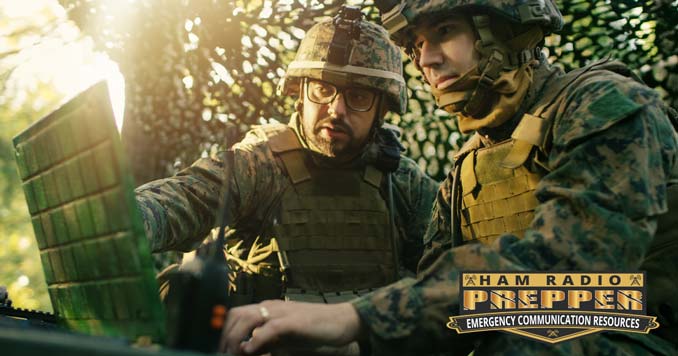
Military frequencies are another great thing to monitor during times of crisis. Milcom frequencies are usually not published, but you can find them so when you do make sure you keep track of where you found them.
If you are looking to monitor military communications you will need a receiver that covers the 225-400 and 118-144 MHz ranges. There are also a number of military and federal agencies that use APCO-25 trunked systems in the 380 – 400 MHz Range. Maritime and Aviation monitoring is another thing that may become useful during an emergency; the following radios will also pick up these types of stations as well as military bands.
Recommended Radios for Milcom and Government Monitoring
- Uniden Bearcat BC125AT Handheld Scanner: Monitor over 40,000 frequencies where you will find civilian and military bands, including Police, EMS, Fire, Marine, Aircraft, Railroad, Civil Air, and ham services.
- Uniden BCD996P2 Digital Mobile TrunkTracker V: This scanner will allow you to monitor communications on APCO 25 Phase 1, Phase 2, X2-TDMA, Motorola, EDACS and LTR trunked systems.

 <
<

